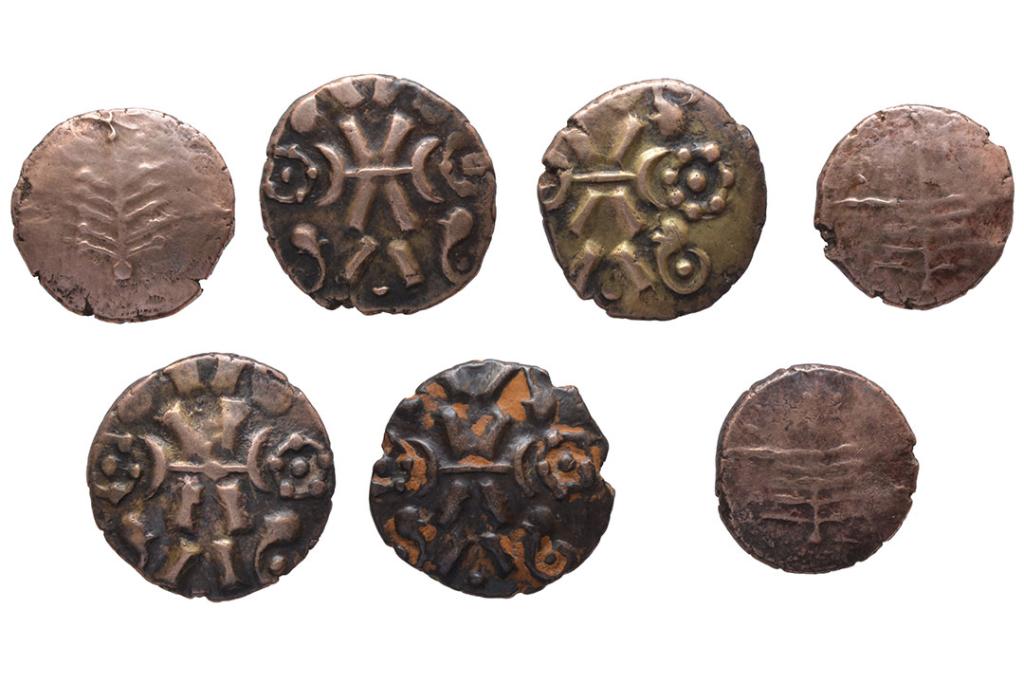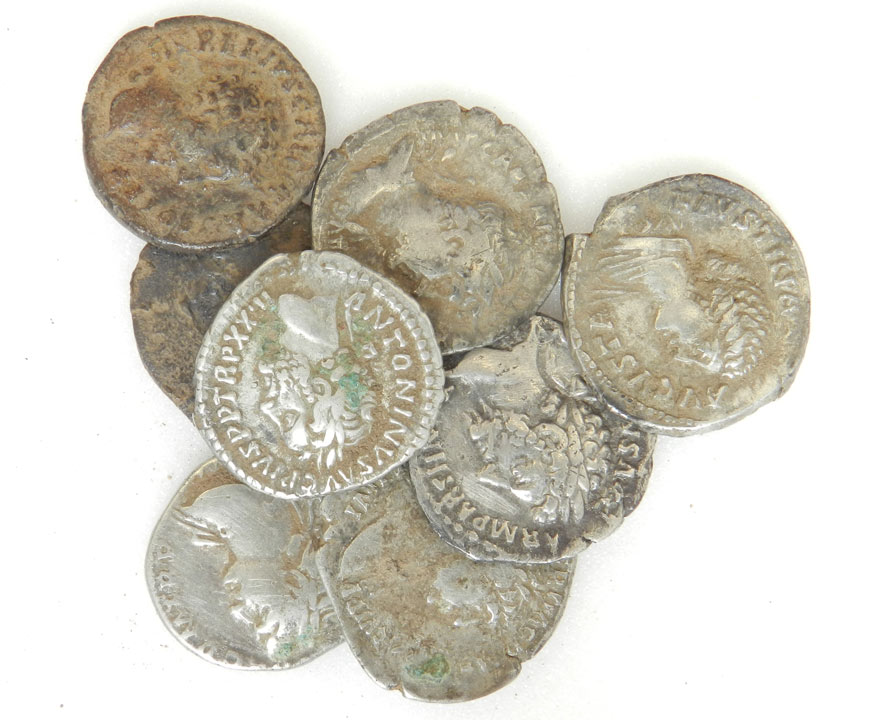All change for our coins!
15 February 2021 marked the 50th anniversary of decimalisation in the UK. This was the biggest change in our currency in modern times and was met with divided opinions: some people relishing a modernisation and simplification, others lamenting the loss of the heritage of the currency.

Some readers will remember that up until 14 February 1971 the British £ was made up of 20 shillings, each of which was made up of 12 pence, a total of 240 pence – something that is mind-blowing to younger generations who’ve grown up with the decimal system of 100 pence in the pound which was introduced on 15 February 1971!
Early British coins
Changes in currency are, of course, not new. Many different monetary systems have been used in Britain. The earliest coinage was used in the Iron Age. Seven ‘gold’ staters found as part of a hoard buried in the early Roman period near Malpas are an example of that. These coins contained precious metals, some of their value literally being in the value of the metal. Although recent research has revealed that these ‘gold’ staters are in fact less that 40% gold, around 8% silver and the rest copper.
The Roman conquest brought new coinage to Britain – a monetary system used across the Roman world. Some coins presented things from the opposite end of the Roman Empire to people in Britain who would have been quite unfamiliar with them: a Roman coin in the Malpas Hoard, for example, shows a camel. The mix of Roman and Iron Age coinage in the Malpas Hoard demonstrates that the older coinage retained a value and was in use in some form after the introduction of the new Roman coinage. Similarly, in 1971 both practical considerations and campaigns forced older coinage to remain in use. For example the sixpence, equivalent to 2.5p in the decimal currency, remained in use for nearly a decade after decimalisation as a result of the ‘save the sixpence’ campaign.

Through the Roman period the economy was plagued with inflation, and in terms of coinage that meant that the precious metal content varied. The Knutsford Hoard of coins and jewellery was buried around the AD 190s, but contained coins dating back well over 200 years, the earliest silver denarius coin being issued by Mark Antony around 32-31 BC. These coins stayed in use when most coins were recalled in AD64 because the Mark Antony denarius didn’t contain enough silver to make it worth melting them down. Trajan demonetised all silver coinage in his monetary reform and reissued coinage of a lower standard.
There were fears that decimalisation would fuel inflation in the UK. It’s still somewhat contentious whether the inflation seen in the early-mid 70s, and the subsequent ‘winter of discontent’ were exacerbated by decimalisation, but there were a complex range of causes of the economic situation.
Faking it
Difficult times sometime push people into criminal activity. Current research on the Poole Hoard in the Museum of Liverpool collection is exploring the number of fakes among the nearly 1500 coins buried in the 4th century. Some fakes are easy to identify because their metal and/or shape are unusual, however, others are only being identified through modern scientific analysis. There has always been a fight against fake coinage. Even before the final conversion to decimal currency, counterfeiters were trying to create fakes of the new coins, for example a Wallasey man reported in the Liverpool Echo on 24 July 1970 as having a mould for making ‘50 new pence’ coins (introduced in 1969 as part of the phased transition to the new decimal currency).
Hoarding coins
The hoarding of coins also spans the ages: Roman hoards, often found by metal detector users are some of the most fascinating evidence we have about the period. Likewise in 1970 there were people hoarding half crowns being warned, in the Liverpool Echo in 1970, that only those dating to before the 1930s would be valuable in the longer term.
The only thing permanent is change, and even your small change will sometimes change!
